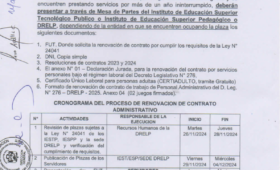The year 999 marked a significant period in the history of education and its integration into societal structures. During this time, educational resources began to take shape, influencing not only individual lives but also entire communities and cultures. This article delves into the multifaceted impact of educational resources on society in that pivotal year, exploring how they contributed to the development of knowledge, societal norms, and economic systems across various regions in 999.
The Role of Monasteries in Education
Monasteries served as crucial centers for learning during the year 999. Their influence stretched beyond religious realms; they were among the first institutions to prioritize literacy, education, and the preservation of knowledge.

Preservation of Knowledge
Monastic communities undertook the important task of copying manuscripts, thereby ensuring the survival of classical texts from Greece and Rome. This act of transcription was vital in preserving philosophical, scientific, and literary works that might have otherwise been lost to time.
The meticulous effort by monks to copy these texts made them accessible to future generations, setting the groundwork for the educational systems that would flourish in the following centuries. By safeguarding ancient knowledge, monasteries not only contributed to intellectual continuity but also ignited curiosity among learners, prompting a culture of inquiry that would be pivotal for the Renaissance.
Literacy Among Clergy and Laity
Beyond preserving texts, monasteries played an essential role in promoting literacy among both clergy and laity. The demand for literate individuals increased as administrative needs grew within the Church and local governance. Monastic schools became prominent for teaching reading, writing, and arithmetic.
As education spread from the clergy to the general populace, social barriers began to diminish. Communities recognized the value of educated members who could contribute to administration, commerce, and local governance. The ripple effect of this literacy transformation allowed for greater civic engagement and participation in communal activities, empowering individuals to become more active members of society.
Cultural Exchange and Interaction
Monasteries were not isolated; they facilitated cultural exchange among different societies. Monks traveled widely, engaging with various cultures and bringing new ideas back to their communities. This exchange led to the introduction of innovative concepts in philosophy, science, and even agricultural practices.
By acting as conduits between civilizations, monasteries enriched local societies. They fostered environments where diverse perspectives could coexist, leading to advancements in learning that have shaped societal developments. This blending of ideas laid the foundation for a more interconnected world.
See more: in 999 login
The Emergence of Universities
In 999, the concept of universities had not yet fully emerged, but the seeds for higher education were being sown. The early forms of academic institutions began to materialize, paving the way for the robust universities that would dominate the educational landscape in subsequent centuries.

Early Academic Gatherings
While formal universities did not exist in the year 999, there were gatherings of scholars who came together to discuss and debate various subjects. These informal structures laid the foundations for what would eventually evolve into organized educational institutions.
Scholars from different regions would converge, exchanging ideas and challenging existing notions. This spirit of inquiry cultivated a culture of learning that transcended regional boundaries, allowing knowledge to flow freely. The discussions held in these early academic settings ignited a passion for exploration and inquiry that would characterize future educational endeavors.
Development of Scholarly Curricula
The necessity for structured learning became apparent as the demand for educated professionals surged. As spiritual leaders sought to ensure that individuals were well-versed in theology, philosophy, and other disciplines, rudimentary curricula began to develop.
These early curricula focused primarily on religious studies, but gradually expanded to include subjects such as rhetoric, grammar, and logic. The establishment of these academic frameworks provided a sense of legitimacy to intellectual pursuits, reinforcing the idea that education was vital for personal and societal advancement.
Influence on Language and Communication
The need for standardized communication arose as diverse groups interacted more frequently. The educational resources developed during this time began to promote common languages and literacy, which facilitated trade, diplomacy, and cultural exchange.
With improved communication, people could engage in discussions about governance, ethics, and social structures. The relationships formed through shared language further bonded communities together, allowing them to collaborate effectively towards common goals. This transformative aspect of educational resources enhanced societal cohesion and fostered a sense of unity.
Economic Transformation Through Education
Education in 999 had far-reaching implications that extended to economic dimensions. As societies embraced the importance of learning, the economic landscape began to shift significantly.
Skilled Labor Forces
With the rise of educational resources, individuals began acquiring specialized skills that were previously reserved for a select few. The emphasis on practical knowledge created a skilled labor force capable of contributing to various industries, including agriculture, craftsmanship, and trade.
As communities transitioned from subsistence farming to more complex economic interactions, individuals equipped with trade skills played a pivotal role. Their expertise fostered innovation and efficiency, leading to increased productivity and wealth generation for the society at large.
Trade Expansion and Economic Networks
Educational resources facilitated the expansion of trade networks. As literacy rates rose, individuals increasingly engaged in commerce, establishing connections with distant lands. Merchants equipped with mathematical knowledge could keep accurate accounts of transactions, facilitating trade agreements and negotiations.
These expanding trade relations not only boosted local economies but also introduced new products and ideas. Societies began to experience cultural diversification, as goods and services from different regions flowed into marketplaces. The resulting economic interdependence laid the groundwork for globalization as we know it today.
Wealth Distribution and Class Structures
As education began to permeate society, it impacted wealth distribution and class structures. Individuals who received education gained access to better job opportunities, allowing them to ascend the socio-economic ladder. This dynamic transformed traditional hierarchies, giving rise to a new class of educated professionals who influenced societal norms.
While education provided pathways for upward mobility, it also highlighted existing inequalities. Those who lacked access to educational resources remained marginalized, creating disparities within society. The impact of education on wealth distribution sparked conversations about social justice and equity, laying the groundwork for future reform movements.
The Intersection of Religion and Education
The intertwining of religion and education in 999 played a significant role in shaping moral values and ethical frameworks within societies.
Religious Instruction and Moral Teaching
Religious institutions were among the primary providers of education during this time. Monasteries and churches emphasized the importance of moral teaching, instilling values such as compassion, humility, and community service among their congregations.
This focus on ethics helped solidify community bonds, as individuals were encouraged to contribute positively to society. The teachings imparted by religious educators laid the groundwork for societal norms that prioritized cooperation and altruism, promoting the idea that education should serve a higher purpose beyond mere knowledge acquisition.
Education as a Tool for Conversion
Education also served as a powerful tool for religious conversion. Missionaries, armed with knowledge and literacy, ventured into diverse communities to spread their faith. Their ability to communicate complex theological concepts using relatable analogies resonated with locals, often gaining acceptance and interest.
This intersection of education and religion resulted in the establishment of new faith communities, which, in turn, contributed to cultural transformation. Newly educated converts took on leadership roles within their communities, becoming advocates for change and progress.
Tensions Between Secular and Religious Education
As educational resources evolved, tensions sometimes arose between secular and religious educational systems. While religious instruction remained dominant, the burgeoning interest in diverse fields of study prompted debates about the role of secular education in society.
These tensions foreshadowed the eventual emergence of distinct educational systems that separated religious teachings from secular curricula. The discourse surrounding the balance of faith and reason would continue to evolve, ultimately shaping the educational landscape of future generations.
FAQs
What was the primary source of education in 999?
The primary sources of education in 999 were monastic schools and religious institutions. Monks played a crucial role in preserving knowledge and teaching literacy to both clergy and laity.
How did education influence societal development during this time?
Education fostered literacy, moral values, and specialized skills, leading to greater civic engagement, economic development, and the establishment of cultural norms within communities.
Were there any forms of higher education in 999?
While formal universities did not exist in 999, early academic gatherings and rudimentary curricula were emerging, setting the stage for the development of higher education in subsequent centuries.
Did education contribute to economic growth in 999?
Yes, the rise of educational resources led to the creation of skilled labor forces and expanded trade networks, significantly contributing to economic growth and productivity within societies.
How did religion intersect with education during this period?
Religion played a significant role in education, with religious institutions providing moral instruction, fostering conversion efforts, and sometimes creating tensions with secular educational initiatives.
Conclusion
The impact of educational resources on society in the year 999 was profound and far-reaching. From the preservation of knowledge in monasteries to the emergence of early academic gatherings and the promotion of literacy, education transformed communities and forged new pathways for economic growth and societal cohesion. It elevated moral standards and offered individuals the tools needed to engage actively in their societies. As we reflect on this critical juncture in history, it becomes clear that the foundations laid during this time continue to influence modern educational practices, reminding us of the timeless value of knowledge in shaping our world.

